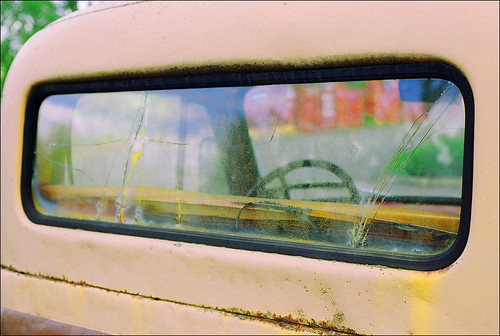
Image : http://www.flickr.com
The Sigma 18-50mm f/2.8 lens is an autofocus lens optimized for digital Cameras and provides an extremely useful range that is the 35mm equivalent of 28mm to 80mm. With a constant f2.8 maximum aperture, this lens is very useful and performs with the best of the best. While it is very comparable to some of the best lenses it is slightly edged by those that cost 5 to 6 times the price. This lens comes in various forms fitting both Canon and Nikon.
The Sigma lens is particularly appealing not only for its large constant aperture, but also for its very compact, size. The lens is 3.3 inches long and weighs 15.6 ounces. The lens feels like it's just the right size and weight on my Nikon D300.
The Sigma 18-50 comes packaged with a petal-shaped lens hood and a soft lens case that can attach to most camera bags or even you belt. While the 18-50 lens is made of a fairly attractive plastic which has a velvety matte appearance, it is very durable and can take a beating. The lens not only looks classy, it feels like a well constructed solidly built lens. A nice feature the lens incorporates is a lock switch that prevents the lens from extending, which is very convenient when you are carrying the lens around on your camera. The lens has a manual focus ring and zoom ring, both of which rotate smoothly. The Lens takes a 67mm filter size.
The focusing speed is good. Although not blindingly fast, it is quite reasonable in low light as well as bright light. The lens motor is very quiet as it incorporates the sigma HSM motor technology.
The image quality of the lens would rank "very-good to Excellent. In using the lens I have noticed very minimal chromatic aberration and little to no barrel distortion; only noticeable around the 18mm wider side.
Performance of the lens at its widest aperture of f/ 2.8 is pretty good with only slight softness in the corners and very sharps in the center. Reducing the F stop to f/4 gives a little more room in the depth of field and results in a very sharp image. I personally feel the lens does it best at f/5.6. Of course at f/8 the lens is tack sharp but will hinder low light photographs.
I would highly recommend this lens as it is well made and is a solid build. The lens is very sharp and has the ability to produce wonderful images. The lens does come in both a HSM and a NON-HSM build. If you have a Nikon DSLR without the motor built in such as the D40, D60, D3000, D5000, you will want to make sure you get the HSM version as it will not autofocus otherwise.
